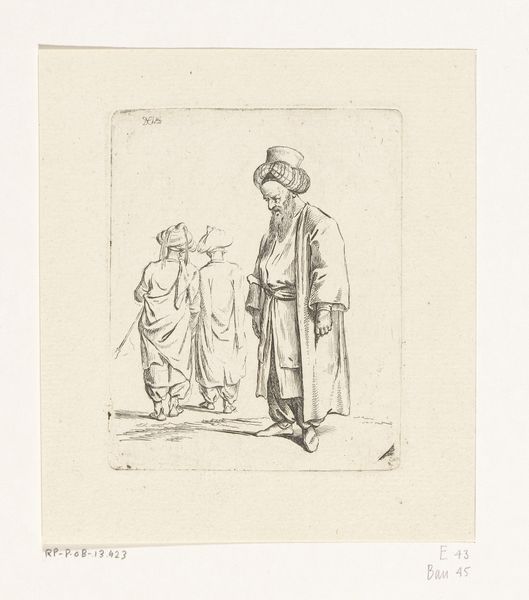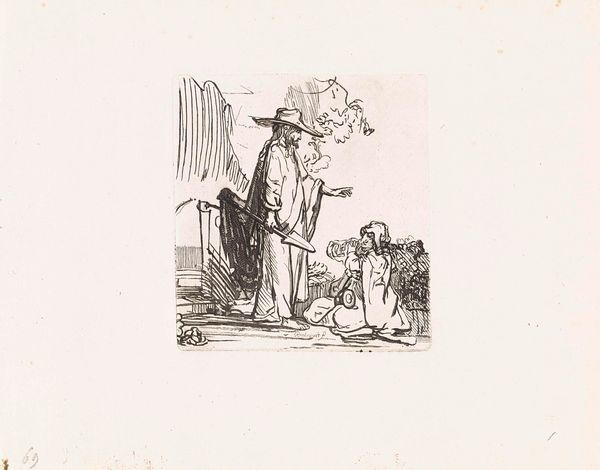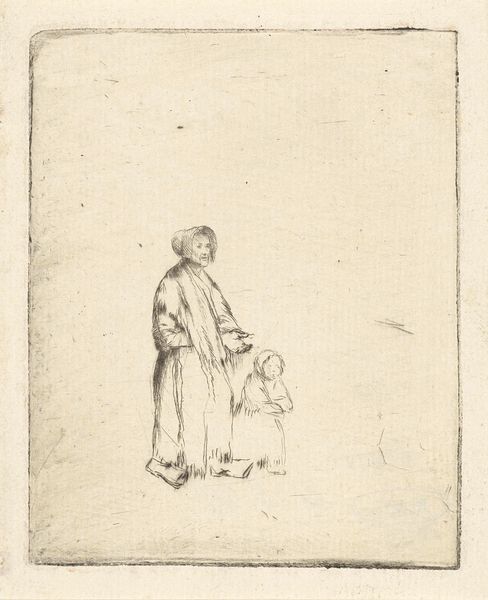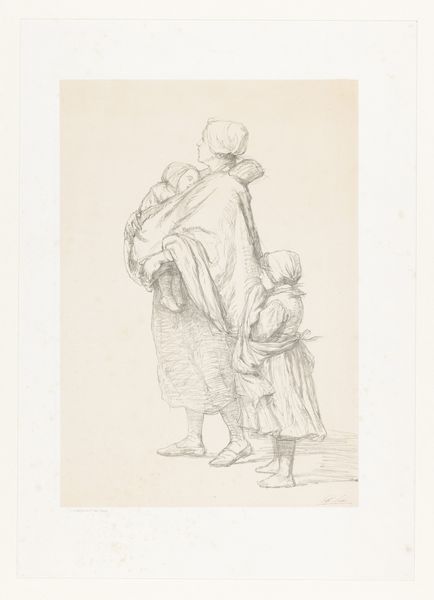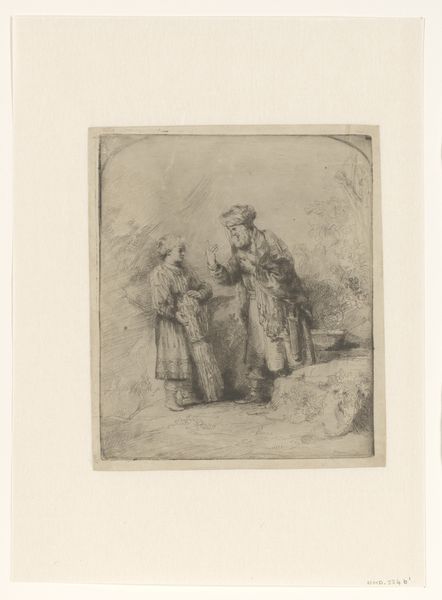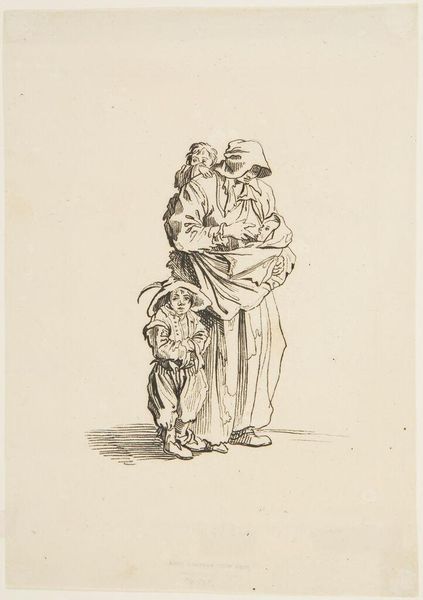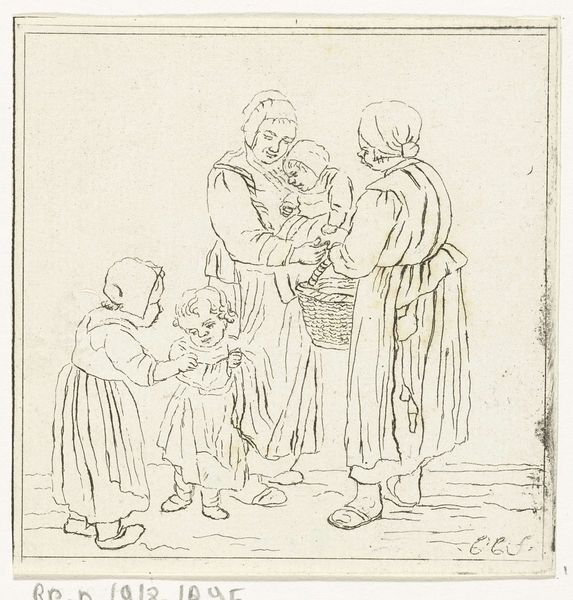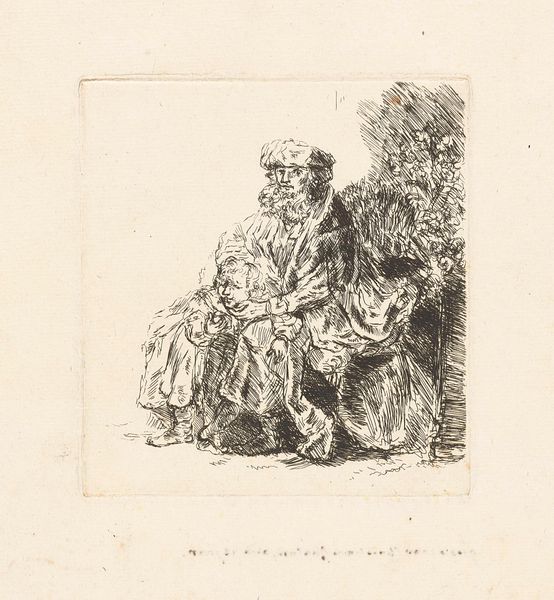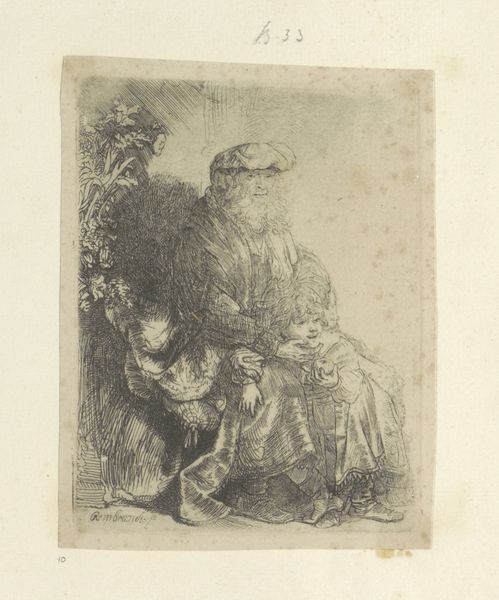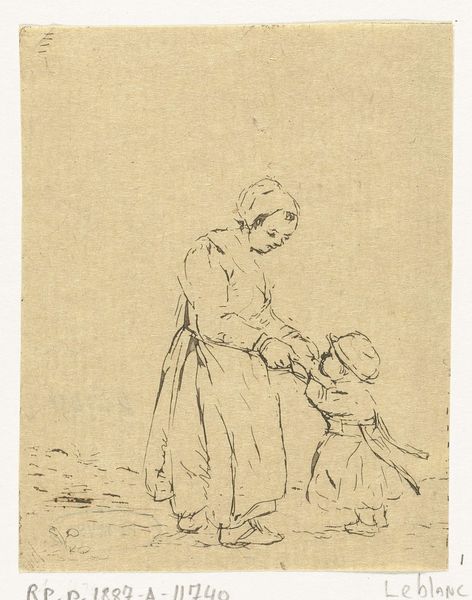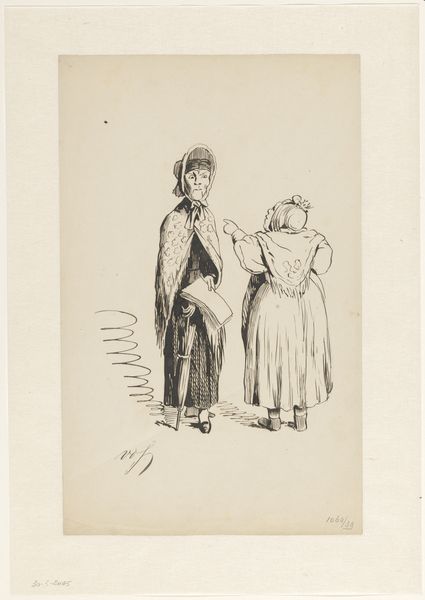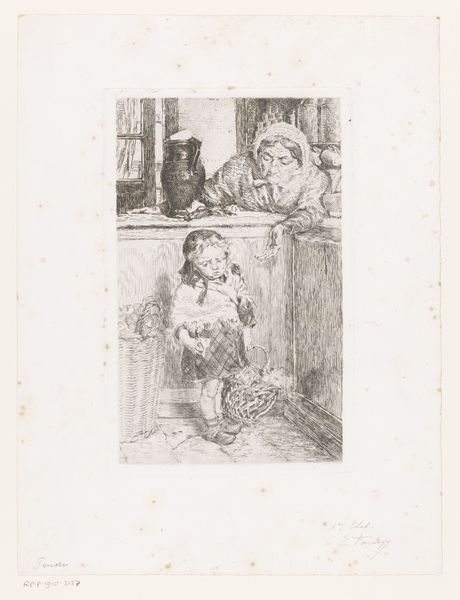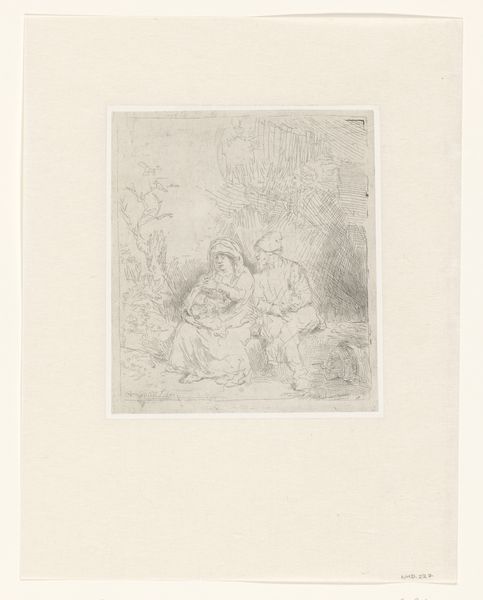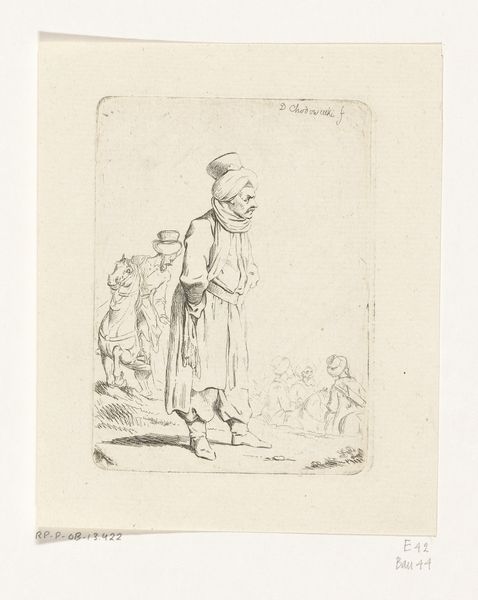
drawing, ink, pen
#
portrait
#
drawing
#
light pencil work
#
quirky sketch
#
narrative-art
#
baroque
#
personal sketchbook
#
ink
#
idea generation sketch
#
sketchwork
#
ink drawing experimentation
#
pen-ink sketch
#
sketchbook drawing
#
pen
#
genre-painting
#
fantasy sketch
#
initial sketch
Dimensions: height 109 mm, width 94 mm
Copyright: Rijks Museum: Open Domain
Curator: This ink and pen drawing, made sometime between 1696 and 1727, is entitled "Natan wijst David op zijn zonden," which translates to "Nathan Rebukes David for His Sins." The piece is by Matthijs Pool. What are your first impressions? Editor: I am struck by its intimate, almost urgent quality. It feels like a private moment rendered in delicate lines. There’s an emotional intensity conveyed even through the spare use of ink. Curator: Indeed. Pool is depicting a powerful scene from the Hebrew Bible. King David, seated here, is confronted by the prophet Nathan about his adultery with Bathsheba and his role in the death of her husband. The artist uses gesture economically but powerfully to express guilt and moral outrage. Considering gender and power, what resonates with you here? Editor: The iconography speaks volumes. Nathan stands, towering in moral authority, while David sits, diminished in stature. The turban David wears suggests his royal status, which is undercut by the shame etched on his features. Notice also Nathan's pointed finger--a classic symbol of accusation. There's a psychological weight to the scene; it’s a tableau of sin and reckoning. Curator: Right. That single finger indicts not just David’s personal moral failings, but the systemic abuse of power enabled by his patriarchal position. The visual vocabulary used makes David's royal attire almost a sign of his corruption rather than authority. We should see Nathan as an example of resisting unjust power. Editor: The minimalist execution adds to its power. The lack of embellishment forces us to focus on the figures themselves and their immediate interaction. Perhaps the rapid lines represent the uncomfortable haste that surrounds their encounter? Curator: Precisely, in considering historical interpretations, such as courtly intrigue and theological discourse, what aspects do you find most thought-provoking from a contemporary vantage? Editor: This encounter remains disturbingly relevant. It speaks to the pervasive issue of holding those in power accountable and calls attention to the disproportionate harm caused by unchecked authority. The raw simplicity emphasizes this. Curator: Thank you. The themes are as timely now as they were when this drawing was made. Editor: An insightful glimpse into a historical narrative, and an evocative reminder of the ongoing struggle for justice.
Comments
No comments
Be the first to comment and join the conversation on the ultimate creative platform.
